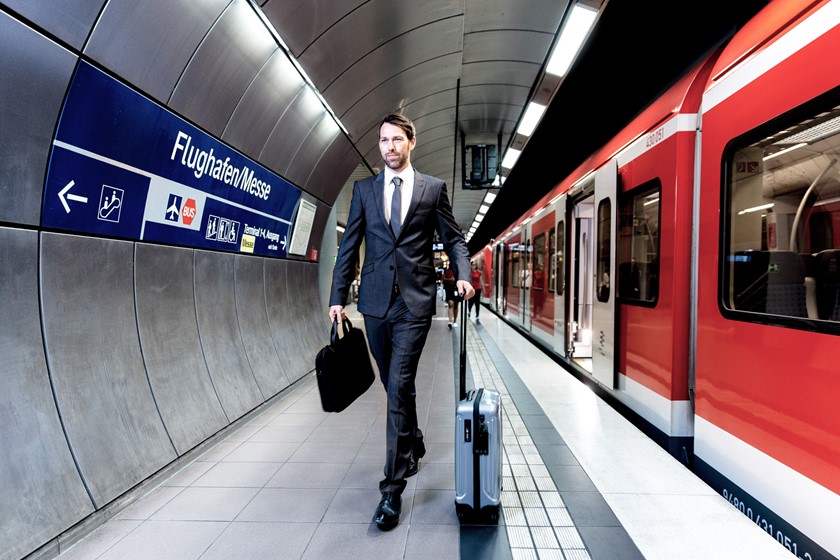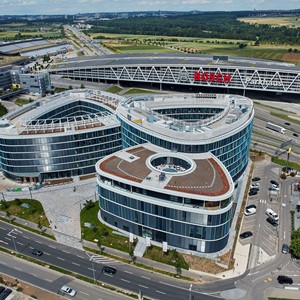
The region around Stuttgart Airport is growing
The Gäubahn is more than just an important connection to Switzerland and Italy. Many neighbouring cities will benefit in future from Stuttgart 21 and a third track at the airport will bring them closer together.

The figures speak for themselves: 2.8 million people currently live in the 179 municipalities of the Stuttgart region which means that every fourth inhabitant of Baden-Württemberg is at home here. With almost 160,000 companies, more than 30 percent of all businesses in the state are located in the Stuttgart region. This includes numerous high-tech companies and innovative businesses that grant the region a high gross domestic product and a top position nationwide. No other region in Germany has a greater number of patent applications in relation to its population. Most recently, in the summer of 2018, 23 medium-sized companies from the Stuttgart region were recognized as being particularly innovative in the Top 100 competition. Among the prize winners were companies from the fields of electrical engineering, mechanical engineering, chemistry, IT, management consulting and nursing care.
The Stuttgart region with its five counties--Böblingen, Esslingen, Göppingen, Ludwigsburg and Rems-Murr--as well as the state capital Stuttgart is already one of the strongest business locations in Europe. In the near future, the industrial and export-strong Stuttgart area will become even greater thanks to the Stuttgart-Ulm rail project. The project’s realisation will bring several regions--as well as neighbouring communities along the Gäubahn line to the south—much closer to Stuttgart Airport and the new Stuttgart Airport City business park.
One example is the small town of Tuttlingen in the Schwarzwald-Baar-Heuberg region, which is often referred to as the "world capital of medical technology". Around 600 companies in this sector have settled in the district, led by Aesculap AG, the world market leader and largest employer in the region. Aesculap AG’s ensemble of historic and new company buildings characterises the cityscape at the railway station.
Tuttlingen currently has almost 36,000 inhabitants, one of whom is Guido Wolf, the former president of the state parliament and current minister of justice. The leading CDU politician has also been chairman of the Gäubahn interest group for some time now. The group is committed to the expansion of the Gäubahn and represents the interests of those cities and municipalities that, like Wolf's hometown, lie on the southbound train route - from Horb via Rottweil, Spaichingen or Weilheim to Hattingen and on to Singen and Zurich.
The declared aim of the association is to accelerate the travel time between Stuttgart and Zurich to get closer to the state capital and the airport. The association sees "an important step to consolidate Baden-Württemberg's leading position in national and international competition, whereby the neighbouring municipalities along the Gäubahn will also benefit from the project" thanks to the new line to Ulm, new traffic hub at Stuttgart Airport and through station of Stuttgart 21. The association and its chairman are convinced that Stuttgart 21 will bring enormous advantages and perspectives for the Gäubahn and its neighbours due to its connection with Stuttgart Airport, provided that as much traffic as possible is transferred to rail for the route.
According to initial forecasts of the airport company, up to 400,000 additional passengers per year could switch to train if the Gäubahn is optimally connected to Stuttgart Airport. In order to enable a separation between the local and other trains, the original plan was recently expanded to include a third track at the airport station. The railway has also taken an important step forward with a new timetable concept: the departure times in Stuttgart and Zurich, for example, were adjusted at the end of 2015 to enable better connections for passengers. From the end of 2017, new IC double-decker trains have been running every hour, doubling the number of long-distance services. This interim concept means a significant improvement in quality and comfort for the same fare.
The neighbouring cities of the Gäubahn will also move closer to the region as soon as Stuttgart 21 and the new line go into operation. The new connection will allow passengers from the south to reach the airport of the state capital and traffic hub much quicker. If the journey is to continue further, the choice of options could hardly be greater: in addition to local, regional and long-distance trains, trams and long-distance buses will also depart from here. The hub is also excellently connected via the A8 motorway and federal highways. And in no other major city will commuters be able to travel so quickly from the airport to the city center; the future train journey to Stuttgart City will take just eight minutes.
Meanwhile, there is still need for speed on the Gäubahn itself. The journey from Stuttgart Central Station to Zurich currently takes a little more than three hours. The Schwarzwald-Baar-Heuberg Chamber of Industry and Commerce is working to reduce the travel time. According to IHK Managing Director Thomas Albiez, the rapid expansion of the Gäubahn is indispensable for the attractiveness of the location and a top priority for the export-oriented high-tech companies and tourism industry in the region.
But it is only a matter of time before the gaps close. In the Lugano Treaty, Germany and Switzerland undertook to shorten the travel time between Stuttgart and Zurich to 2 hours and 15 minutes. This means that some double-track island platform where trains can meet have to be installed on the mostly single-track route from Horb. The planning approval decision for the double-track extension between Horb and Neckarhausen was made in May 2018. Further sections such as the Rottweil-Neufra and Spaichingen-Rietheim-Wurmlingen lines are to follow so that a train speed of 230 kilometers per hour with tilting technology will be possible. State Transport Minister Winfried Hermann (Grüne) commented: "This is a very important step for the expansion and modernisation of the internationally important Stuttgart-Bodensee-Zürich link. The federal government must now show that it is serious about expanding the line."
This might also interest you












